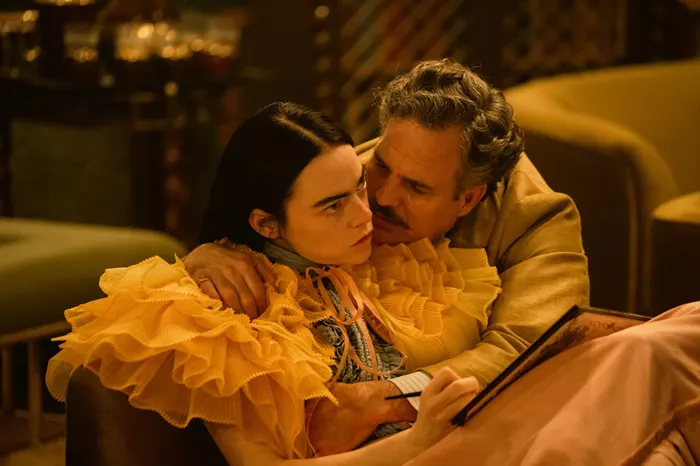When director Yorgos Lanthimos approached production designers James Price and Shona Heath with a vision for his latest film, Poor Things, the Venice sensation and Golden Lion winner that has put the filmmaker and star Emma Stone at the forefront of this year’s Oscar race, the notoriously meticulous and demanding director had no shortage of notes for the duo. Nor did he have any reservations about the scale of what he wanted to achieve.
“When I first met Yorgos, he talked about wanting to make a 1930s studio film, but with today’s techniques,” Price tells Variety. Providing the duo with visual references ranging from the paintings of French futurist Albert Robida to Francis Ford Coppola’s Dracula, the director envisioned lavish, monumental sets built from scratch and glorious backdrops splashed across LED screens. He encouraged them to let their imaginations run wild.
“Yorgos’ brief was wide open,” says Heath. “He wanted us to build all the worlds we would see, mainly to maintain consistency in a new found language that was somewhere between surreal, fantasy, otherworldly, dreamlike, but also set in a familiar time period.”
Adds Price: “Nothing was off the table, right from the start of the filmmaking. He wanted it to look like nothing that had ever been done before.
Achieving this required studio space – lots of it – as well as craftspeople with the technical skills to bring Lanthimos’ extraordinary yet exacting vision to life. The production team scouted studios around London – including Pinewood and Warner Bros. Studios Leavesden – and travelled to Wales, Northern Ireland and the Czech Republic before arriving in Hungary, where they found ample studio space and a highly skilled crew base, as well as favourable costs and an attractive 30% cash discount. According to producer Ed Guiney of Dublin-based Element Pictures, “all roads led to Budapest.
The production was based at Origo Studios, where some 115,000 square feet across four soundstages and 60,000 square feet of backlot space were used to build sets for London, Paris and the colossal steamboat that takes Stone’s Bella Baxter across the Mediterranean alongside Mark Ruffalo’s foppish lawyer Duncan Wedderburn. The sprawling Lisbon set was constructed at nearby Korda Studios and built on the largest soundstage in continental Europe.
Scale was important to the production team. “We created these immersive sets where it becomes like a theme park,” says Price. “It helps the actors to immerse themselves, especially when you’re doing a really unique world. They can just get completely absorbed in it. It helps them exist in that world.”
Over the course of the film’s 11-week shoot, four large sets had to be built from scratch. “They delivered million-pound sets a couple of weeks apart,” says Price. “We had so many sets working at once that we became like a self-feeding snake…. We would steal people from one set to take them to another. It was kind of crazy, the scale we were working at.
None of this would have been possible, adds the production designer, without the combined efforts of Hungary’s below-the-line talent. “The whole construction team was incredible. The art department in Hungary is just super, super talented. The skills of all the art directors and the artists, with their 3D modelling and their draftsmanship, are impeccable,” says Price. “Other than London, I don’t think we could have done it [anywhere else in Europe]… on the scale we were building to and in the time we had to build.”
“There were moments of absolute desperation,” says Heath, laughing as she recalls the frenetic pace. “We couldn’t actually fit all the sets we needed in the whole of the Budapest studios.” Several locations that would be used in the film were “completely transformed”. “We put in new floors, new walls, new curtains, added architectural details to bring them into our world,” she continues. “It was huge. Everything was bursting at the seams with ‘Poor Things’.”























